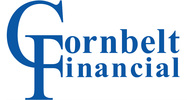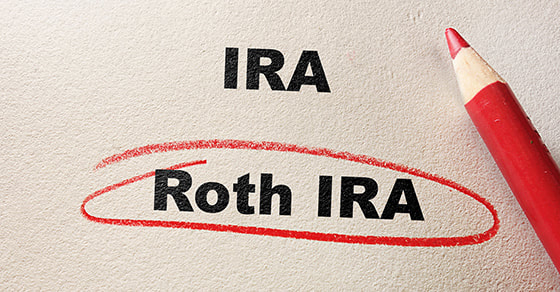|
Converting a traditional IRA to a Roth IRA can provide tax-free growth and the ability to withdraw funds tax-free in retirement. But what if you convert a traditional IRA — subject to income taxes on all earnings and deductible contributions — and then discover that you would have been better off if you hadn’t converted it? Fortunately, it’s possible to undo a Roth IRA conversion, using a “recharacterization.”
Reasons to re-characterize There are several possible reasons to undo a Roth IRA conversion. For example:
Generally, when you convert to a Roth IRA, if you extend your tax return, you have until October 15 of the following year to undo it. (For 2016 returns, the extended deadline is October 16 because the 15th falls on a weekend in 2017.) In some cases it can make sense to undo a Roth IRA conversion and then redo it. If you want to redo the conversion, you must wait until the later of 1) the first day of the year following the year of the original conversion, or 2) the 31st day after the re-characterization. Keep in mind that, if you reversed a conversion because your IRA’s value declined, there’s a risk that your investments will bounce back during the waiting period. This could cause you to reconvert at ahigher tax cost. Re-characterization in action Nick had a traditional IRA with a balance of $100,000. In 2016, he converted it to a Roth IRA, which, combined with his other income for the year, put him in the 33% tax bracket. So normally he’d have owed $33,000 in federal income taxes on the conversion in April 2017. However, Nick extended his return and, by September 2017, the value of his account drops to $80,000. On October 1, Nick re-characterizes the account as a traditional IRA and files his return to exclude the $100,000 in income. On November 1, he reconverts the traditional IRA, whose value remains at $80,000, to a Roth IRA. He’ll report that amount on his 2017 tax return. This time, he’ll owe $26,400 — deferred for a year and resulting in a tax savings of $6,600. If the $20,000 difference in income keeps him in the 28% tax bracket or tax reform legislation is signed into law that reduces rates retroactively to January 1, 2017, he could save even more. If you convert a traditional IRA to a Roth IRA, monitor your financial situation. If the advantages of the conversion diminish, we can help you assess your options. © 2017
0 Comments
When businesses provide meals to their employees, generally their deduction is limited to 50%. But there are exceptions. One is if the meal qualifies as a de minimis fringe benefit under the Internal Revenue Code.
A recent U.S. Tax Court ruling could ultimately mean that more employer-provided meals will be 100% deductible under this exception. The court found that the Boston Bruins hockey team’s pregame meals to players and personnel at out-of-town hotels qualified as a de minimis fringe benefit. Qualifying requirements For meals to qualify as a de minimis fringe benefit, generally they must be occasional and have so little value that accounting for them would be unreasonable or administratively impracticable. But meals provided at an employer-operated eating facility for employees can also qualify. For meals at an employer-operated facility, one requirement is that they be provided in a nondiscriminatory manner: Access to the eating facility must be available “on substantially the same terms to each member of a group of employees, which is defined under a reasonable classification set up by the employer that doesn’t discriminate in favor of highly compensated employees.” Assuming that definition is met, employee meals generally constitute a de minimis fringe benefit if the following conditions also are met:
The meals generally also must be furnished for the convenience of the employer rather than primarily as a form of additional compensation. On the road What’s significant about the Bruins case is that the meals were provided at hotels while the team was on the road. The Tax Court determined that the Bruins met all of the de minimis tests related to an employer-operated facility for their away-game team meals. The court’s reasoning included the following:
If your business provides meals under similar circumstances, it’s possible you might also be eligible for a 100% deduction. But be aware that the facts of this case are specific and restrictive. Also the IRS could appeal, and an appeals court could rule differently. Questions about deducting meals you’re providing to employees? Contact us. © 2017 At back-to-school time, much of the focus is on the students returning to the classroom — and on their parents buying them school supplies, backpacks, clothes, etc., for the new school year. But let’s not forget about the teachers. It’s common for teachers to pay for some classroom supplies out of pocket, and the tax code provides a special break that makes it a little easier for these educators to deduct some of their expenses.
The miscellaneous itemized deduction Generally, your employee expenses are deductible if they’re unreimbursed by your employer and ordinary and necessary to your business of being an employee. An expense is ordinary if it is common and accepted in your business. An expense is necessary if it is appropriate and helpful to your business. These expenses must be claimed as a miscellaneous itemized deduction and are subject to a 2% of adjusted gross income (AGI) floor. This means you’ll enjoy a tax benefit only if all your deductions subject to the floor, combined, exceed 2% of your AGI. For many taxpayers, including teachers, this can be a difficult threshold to meet. The educator expense deduction Congress created the educator expense deduction to allow more teachers and other educators to receive a tax benefit from some of their unreimbursed out-of-pocket classroom expenses. The break was made permanent under the Protecting Americans from Tax Hikes (PATH) Act of 2015. Since 2016, the deduction has been annually indexed for inflation (though because of low inflation it hasn’t increased yet) and has included professional development expenses. Qualifying elementary and secondary school teachers and other eligible educators (such as counselors and principals) can deduct up to $250 of qualified expenses. (If you’re married filing jointly and both you and your spouse are educators, you can deduct up to $500 of unreimbursed expenses — but not more than $250 each.) Qualified expenses include amounts paid or incurred during the tax year for books, supplies, computer equipment (including related software and services), other equipment and supplementary materials that you use in the classroom. For courses in health and physical education, the costs for supplies are qualified expenses only if related to athletics. An added benefit The educator expense deduction is an “above-the-line” deduction, which means you don’t have to itemize and it reduces your AGI, which has an added benefit: Because AGI-based limits affect a variety of tax breaks (such as the previously mentioned miscellaneous itemized deductions), lowering your AGI might help you maximize your tax breaks overall. Contact us for more details about the educator expense deduction or tax breaks available for other work-related expenses. © 2017 |
AuthorAdam Carr, MBA, EA Archives
June 2024
Categories
All
|




 RSS Feed
RSS Feed

